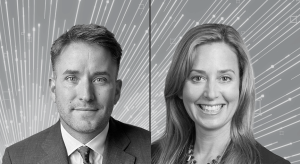Higher ed CIOs look for more inclusive hiring, workforce

Higher education IT organizations need to change the way they look for, hire and retain talent in their departments with a lens on diversity, equity and inclusion, a group of higher education chief information officers said at a conference Tuesday.
“The best candidate or fit, we often [subconsciously] think is someone just like you,” said Melissa Woo, Stony Brook University’s chief information officer, on a panel at Educause Annual Conference 2019 in Chicago. “To shift your internal culture, have your hiring managers and your staff who are on search committees understand and promote what it actually means to hire the best candidate — not someone that is just like you — but someone who fills a gap that we have on the team.”
Higher education CIOs are changing the way they recruit talent, Woo said, from the language included in job descriptions to looking for talent in different places.
“You have to make sure to call out a desire to have as wide a pool of candidates as possible,” said Woo, who will become the CIO of Michigan State University on Dec. 1. “We are taking a really good look to be sure we are being as inclusive as we can be.”
Keith McIntosh, the CIO at Richmond University, said he approached diversity and inclusion early in his tenure as CIO. He said he made an effort to get to know his full team of employees and approached his human resources department early about ensuring diversity was part of the hiring process.
McIntosh said the leadership he took, mixed with an adjusted human-resources process, lead to a shift.
But even as the way IT talent is recruited and retained under McIntosh changed, he discovered he had work to do internally, as well. At one time, McIntosh said that women on his team confronted him about a lack of gender diversity in the department.
“When probably two-thirds of the folks say they have a gender problem, you see that as a leader ‘I have a problem in front of me, and I can’t ignore it,’” McIntosh said. “We put together task force so we can better understand the challenges that a woman has in working in IT.”
McIntosh, along with the human resources department and a sociology professor, put together a gender-diverse group to make up the task force, and organized a workshop for the whole staff to help explain the challenges women in the department were facing.
“This is important. [Employees] need to understand how colleagues are challenged and how some of the things that we do overtly or unconsciously that make it a struggle for them,’” McIntosh said. “We planned fun activities, and i think [some] walked away understanding, ‘Dang, we do stupid stuff that really make it tough for women in our career field.’”
McIntosh also said he encourages discussion about race-related challenges in the organization, especially after events like the 2017 white supremacist rally in Charlottesville, Virginia, which lead to the death of three people.
“We often, when it comes to race, get scared as hell about it,” McIntosh said. “[With those discussions], you end up with a place that’s much richer and dynamic.”
Cheryl Washington, the chief information security officer at the University of California at Davis, said she holds her managers accountable for ensuring that her team is diverse, and also inclusive of all.
“It is extraordinarily important as leaders to take the reins [of diversity and inclusion] and run with it,” Washington said. “There are lots of populations of individuals who meet the criteria that we talk about who would love to join our field, but they’re looking for the door to be cracked open for them.”
Washington said she spoke to a group of cybersecurity students at UCLA and found that they had never seen a CISO at a major university who looked like them.
“They had never seen anyone like me before — an African-American woman who is a CISO at a large institution,” Washington said. “With mentoring and outreach, you have to expand your team, expand your portfolio and look for that gem in the rough. There’s a kid on your campus who wants to do what you’re doing — they just want to know that you’re there and willing to talk to them.”




